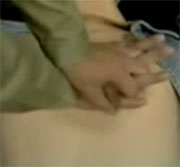- Skip Storing This Everyday Product in the Fridge Door
- Green Tea + B3 Pairing May Boost Brain Health
- Navigating Your Midlife Crisis: Embracing New Possibilities
- City Raccoons Showing Signs of Domestication
- Mapping the Exposome: Science Broadens Focus to Environmental Disease Triggers
- One Week Less on Social Media Linked to Better Mental Health
- Your Brain Changes in Stages as You Age, Study Finds
- Some Suicide Victims Show No Typical Warning Signs, Study Finds
- ByHeart Formula Faces Lawsuits After Babies Sickened With Botulism
- Switch to Vegan Diet Could Cut Your Greenhouse Gas Emissions in Half
CPR Underused by Minorities, Study Finds


TUESDAY, Sept. 10Cost, fear and lack of information are major reasons why many members of U.S. minority groups who live in cities don’t learn or perform lifesaving CPR, according to a new study.
The findings suggest changes are needed in the way CPR classes are pitched to the public, the researchers said.
“Traditionally, CPR courses were promoted to babysitters, daycare workers and lifeguards, and the model was that we set up a training center and the community came to us,” said lead researcher Dr. Comilla Sasson, an emergency medicine expert and assistant professor at the University of Colorado School of Medicine.
“Our research suggests a community-based approach is needed, such as partnering with local churches,” Sasson said. “Bringing our knowledge and expertise about CPR to their doorstep, instead of the other way around, could help address these issues and reduce healthcare disparities among minorities requiring immediate medical care.”
Researchers interviewed 42 residents in Columbus, Ohio, for the study, which was published in the Sept. 11 issue of the journal Circulation: Cardiovascular Quality and Outcomes.
Most of the participants were aged 30 or older, black and female. About half lived in poor, high-crime neighborhoods, and two-thirds had an annual household income of less than $20,000.
The study found that 83 percent of the participants were familiar with CPR, but less than half had taken a CPR course within the previous three years. Money was a major barrier to learning CPR, including the costs of the class, childcare and transportation.
Participants also lacked information about the importance of CPR and where to receive training. There was a lack of information available in languages other than English, the study found.
The study also found that participants were afraid to perform CPR, particularly on children, and to perform mouth-to-mouth resuscitation on a stranger. They did not know that hands-only CPR can be effective in saving a life. This type of CPR involves using only chest compressions.
In addition, the participants were worried that performing CPR on a stranger could pose a threat to their personal safety (particularly in neighborhoods with high levels of violence), lead to problems with police or put them at risk of being sued.
However, since four out of every five out-of-hospital cardiac arrests occur at home, “there is also a real opportunity to adjust CPR training to focus on coming to the aid of family members,” Sasson said in a journal news release.
Suggestions from the study participants included:
- Making CPR classes free or providing allowances for childcare, gift cards for food or bus tokens for transportation.
- Combining CPR training with basic first-aid training, offering certification or academic credit, or promoting CPR as a job skill to help residents advance their professional careers.
- Emphasizing that CPR can save the lives of family members and loved ones.
More information
The American Academy of Family Physicians has more about CPR.
Source: HealthDay
Copyright © 2025 HealthDay. All rights reserved.










